Understanding Geometry Equations: A Guide for Young Learners
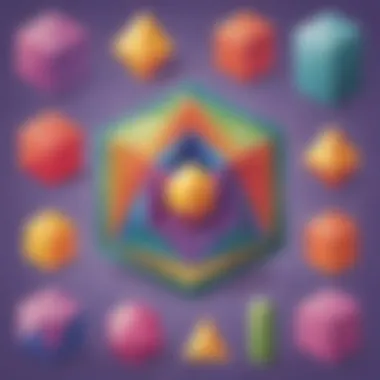
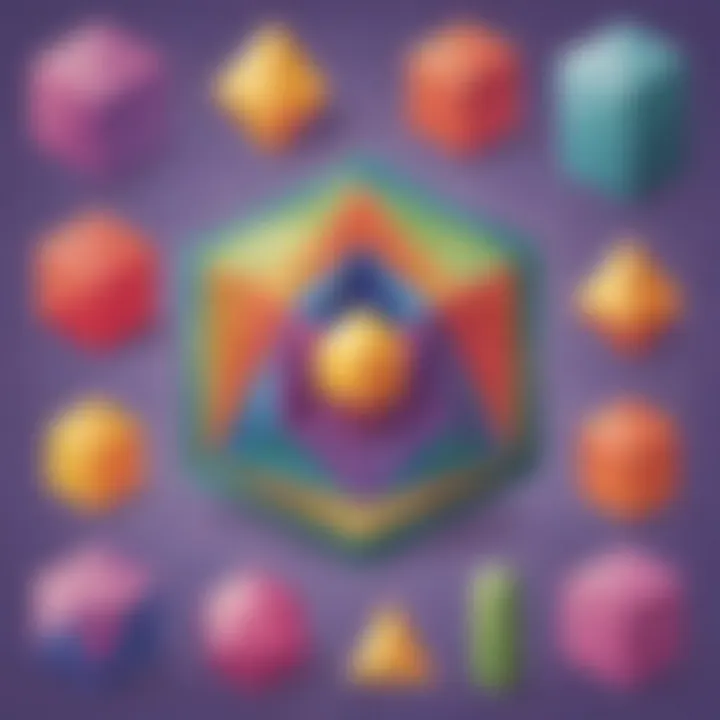
Intro
Understanding geometry is an important part of a child's educational journey. When children grasp the basic concepts of geometry equations, it paves the way for future success in mathematics. Geometry can seem difficult at first, but with guidance and fun activities, students can engage in and enjoy learning these concepts.
The relevance of Geometry
Geometry includes shapes, sizes, and the properties of space. These are foundational aspects of mathematics that children encounter in various subjects. Learning geometry helps in areas beyond math, supporting skills in art, science, and daily life. This guide offers exciting ways to learn geometry equations. Let's explore how we can bring geometry to life for young minds.
Creative Activities
Craft Ideas
Creating geometry shapes through fun crafts allows students to learn by doing. This active engagement with geometry equations increases comprehension. Children can make patterns, structures, or drawings using basic materials, such as paper and scissors. They develop spatial awareness while exercising creativity.
Step-by-Step Guides
Each craft should have clear instructions so that children can easily follow along:
- Gather necessary materials (like paper, glue, or markers).
- Choose a geometry concept (squares, triangles, circles, etc.).
- Follow the instructions closely to create a shape or object.
Encourage kids to label their creations. This practice reinforces terminology related to geometry. For instance, say they create a triangle. They can write down its sides, angles, and properties.
Educational Value
These activities result in multiple educational benefits:
- Improved Understanding: Crafting shapes engages visual and tactile learners.
- Real-World Connections: Geometry shows up in architecture and design, enriching everyday lives.
- Confidence Boosting: Completing a craft often results in a sense of achievement, encouraging children to approach more complex geometry equations later.
Fun Quizzes
Quiz Topics
Fun quizzes could cover various related topics such as:
- Types of angles: obtuse, acute, right
- Area and perimeter of different shapes
- Identifying geometric shapes in the environment
Question Types
Diverse question formats can engage young learners in geometry concepts:
- True or false questions to assess basic understanding
- Multiple-choice questions that allow for guesses
- Fill-in-the-blank questions which promote recall
Knowledge Reinforcement
Quizzes serve an additional role in education by consolidating learned material. This reinforcement helps solidify ideas and concepts, making mastery of geometry equations achievable while making learning enjoyable.
Fact-Based Articles
Topics
Articles exploring geometry facts should tackle a range of subjects including:
- History of geometry's development.
- Famous mathematicians who advanced the field.
- Real-life applications of geometry in various professions.
Engaging Content
Well-written articles will present information in accessible and vivid manners. They should clarify concepts clearly, ensuring children can grasp even the most challenging ideas effortlessly.
Preface to Geometry
Geometry is a fundamental branch of mathematics that deals with shapes, sizes, and the properties of space. For young learners, grasping the basics of geometry can open doors to new ways of thinking and problem-solving. Understanding geometry equips children with essential skills. It encourages critical thinking and spatial reasoning. Students learn how to measure and understand the world around them. By introducing young children to geometry, they get a solid grounding that is useful in various fields like science, engineering, art, and even everyday activities.
What is Geometry?
Geometry is more than just lines and shapes. It examines how different elements fit together and interact within space. At its core, geometry focuses on points, lines, angles, surfaces, and solids. Children can start exploring geometry by identifying basic shapes like triangles, squares, and circles. These shapes form the foundation for understanding geometry more deeply. Learning about geometry means learning to analyze and map out areas, relationships, and measurements. Geometry empowers kids to visualize problems. This skill will serve them well in many subjects, such as science and technology.
Importance of Geometry in Everyday Life
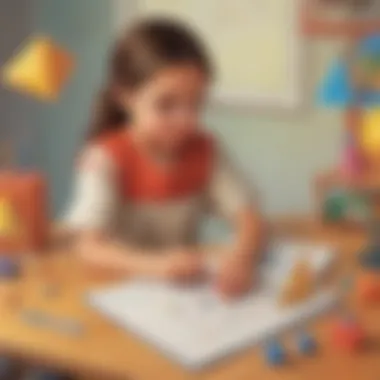
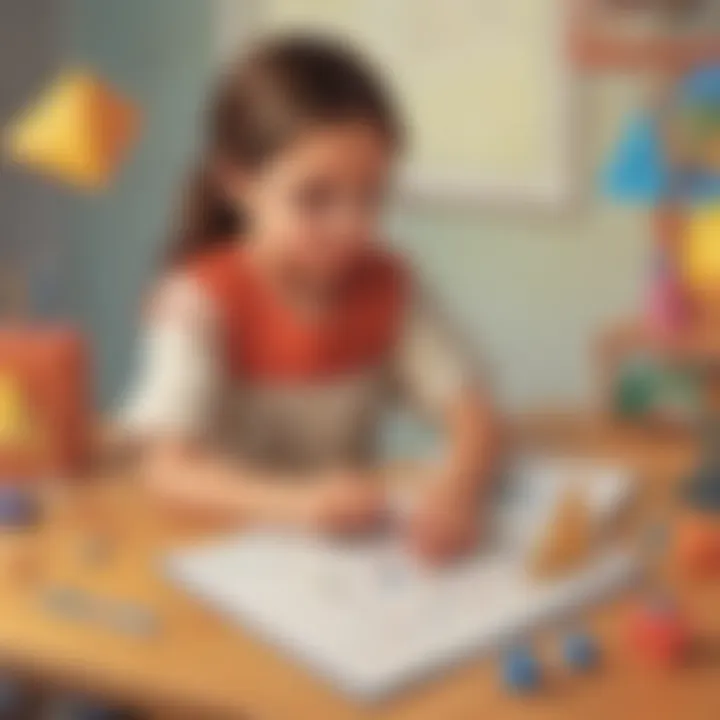
Geometry is not just an abstract concept. It has practical applications that engage students in real-world situations.
Consider the following benefits:
- Navigation and Mapping: Understanding basic geometry helps individuals find their way. Knowing angles makes it easier to read maps and use GPS.
- Architecture and Building: Architects rely on geometry to design buildings that are not only functional but also aesthetically appealing.
- Art and Design: Artists use geometric principles to create balanced and considerable works. Geometry can enhance creativity.
- Sports: In sports, knowing angles affects strategy and performance. A basketball player should understand angles for successful shooting.
Basic Geometry Concepts
Basic Geometry Concepts provide a fundament for understanding more complex topics in mathematics. These concepts serve as building blocks for future learning. By mastering the basics like points, lines, angles, and shapes, students develop problem-solving skills useful in various fields. Grasping these ideas fosters critical thinking and connects abstract mathematical theories with real-life applications. They help young learners recognize the relevance of geometry and its role within their daily experiences.
Points, Lines, and Angles
What are Points?
A point represents a location in space. It has no dimension such as length or width, making it an ideal starting position for geometry. Points are often labeled with letters, such as A, B, or C. Understanding points lays the groundwork for more complex geometric figures.
Lines Explained
Lines are straight and extend indefinitely in both directions. They can be described through equations and are critical in creating shapes. Lines can also meet at angles to form other geometric figures. Differentiating between types of lines, like parallel and perpendicular, helps young learners grasp more complicated ideas later.
Exploring Angles
An angle is formed where two lines intersect. It measures the stability between the two lines. Angles are vital for understanding shapes and are classified into various types, including acute, right, and obtuse angles. Learning about angles provides essential context for creating shapes and solving geometric problems.
Shapes and Their Properties
Shapes indicate closed figures composed of points and lines. Understanding these shapes and their properties is vital to mastering geometry. The following shapes represent key components in basic geometry.
Triangles
Triangles are polygons with three sides. They come into play in many geometry problems. A significant characteristic of triangles is their variability. Depending on the side lengths, triangles can be classified as equilateral, isosceles, or scalene. Their angular properties also create distinct traits. Triangles contribute memory methods for solving many types of geometric equations, making them a practical choice for learners.
Quadrilaterals
Quadrilaterals consist of four sides. Examples include squares, rectangles, and rhombuses. They are beneficial for teaching students since they inherit properties reminiscent of triangles but feature a higher complexity. They often contribute as foundational references for exploring concepts such as area and perimeter. The distinct feature of quadrilaterals is their ability to demonstrate symmetry or asymmetry. This property deepens the context in which learners can approach challenges in geometry.
Circles
Circles are unique shapes characterized by their curved symmetry. They comprise all points in a plane that are equidistant from a single point, called the center. Circles entice learners because their measurements, particularly radius and diameter, relate to larger mathematical concepts such as pi (π). Understanding circles introduces considerations of the circle's area and circumference, which will be critical in subsequent applications of geometry.
Perimeter and Area
Perimeter and area are two fundamental measurements relevant across geometric figures. The perimeter refers to the distance around a shape, while the area represents the space contained within a figure. Mastering the formulas for calculating both are essential skills.
Utilizing the right formulas allows learners to find specific measurements quickly. It's important for students to practice calculating both perimeter and area for various shapes. This skill builds their confidence and enhances their problem-solving skills as they encounter different geometry equations.
Overall, mastering Basic Geometry Concepts equips young learners with valuable tools to engage with mathematics more effectively.
As they develop these fundamental skills, they prepare themselves for more complex challenges in geometry and beyond.
Solving Geometry Equations
Understanding how to solve geometry equations is essential not just in math classes but also in daily situations. Geometry equations provide the tools needed for students to solve different problems involving shapes, areas, volumes, and angles. With a solid grasp of these equations, young learners can approach complex concepts with confidence and clarity.
Additionally, learning to solve geometry equations facilitates the development of problem-solving skills. Young students become more proficient in identifying the right equations needed in various situations. Being able to take a problem and break it down into manageable parts is a skill that extends beyond mathematics and into many areas of life.
Understanding Equation Structure
Every equation follows a specific structure that helps individuals understand the relationships between different elements. For geometry, these relationships typically involve points, lines, and figures. Learning how to read and analyze equations can be influential in determining what the problem is asking. Equations commonly consist of variables that represent unknown quantities, coefficients which are numbers that multiply those variables, and operators like addition, subtraction, multiplication, or division. By familiarizing themselves with each component of geometry equations, young learners can more effectively solve and manipulate them.
Common Geometry Equations
Formula for Area of Shapes
The formulas related to the area of shapes are fundamental in geometry. Knowing how to calculate area is crucial for numerous practical applications, such as determining how much paint is needed for a wall or the amount of grass for a garden. A key characteristic of the area formulas is their adaptability to different shapes:
- Rectangle: Area = length × width
- Triangle: Area = 1/2 × base × height
- Circle: Area = π × radius²
These formulas are favorable choices because they encourage systematic thinking and provide direct solutions to problems involving two-dimensional space. One significant aspect of area formulas is their straightforward nature; with the correct dimensions, a quick calculation can yield accurate results. However, measuring dimensions must be precise to obtain the right area, as errors can multiply into sizeable inaccuracies.
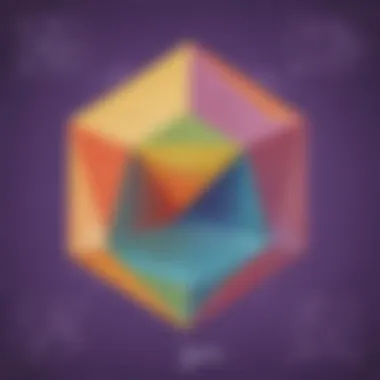
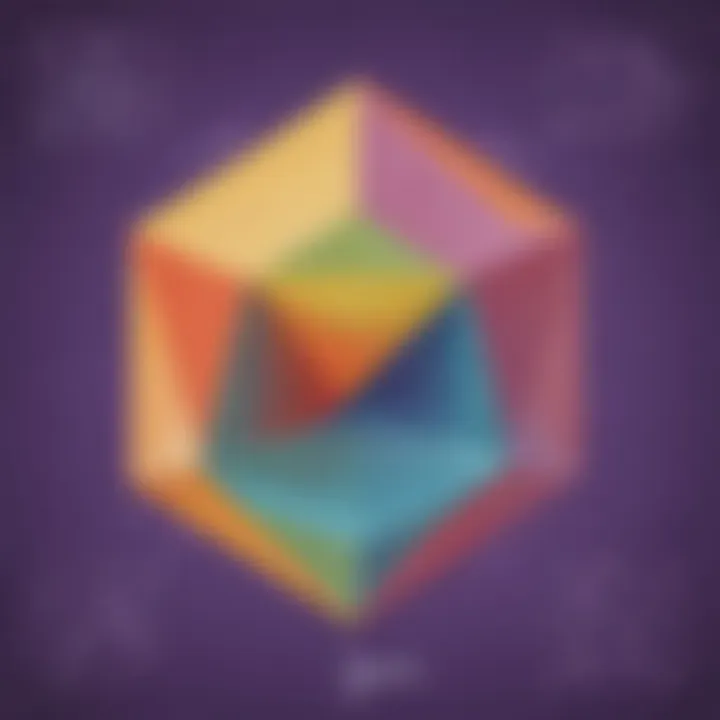
Formula for Volume
In entered cases of three-dimensional shapes, volume formulas are necessary. Volume represents the space inside a shape, such as how much water an aquarium can hold. The basic formulas include:
- Cube: Volume = side³
- Rectangular Prism: Volume = length × width × height
- Cylinder: Volume = π × radius² × height
Volume formulas are popular because they depict an important concept in real life—filled spaces. These equations teach students how to analyze shapes beyond their surfaces. It also allows for further exploration in sciences, such as chemistry and physics. While easy to calculate with the correct dimensions, volume can also become challenging when dealing with irregular objects where dimensions can be harder to measure accurately.
Angles in a Triangle
The properties of triangles, particularly the angles, form another foundational area in geometry. The most notable characteristic is that the sum of all angles in a triangle always equals 180 degrees. This crucial property demonstrates the relationship between angles and assists students in determining missing angle sizes quickly. A useful formula in this context is expressed as:
- Angle A + Angle B + Angle C = 180°.
This fact makes angles in triangles a significant topic in this article, bridging geometry and trigonometry. Young learners can utilize the angles of a triangle in various applications, such as construction, art, and even navigation. However, challenges may arise when incorrect angle measures or assumptions fluctuate calculations, so students need to ensure high precision in applications of this concept.
Understanding and mastering these common geometry equations will provide a strong foundation for students. Enhancing their skills in solving geometry equations can advance their confidence and performance within mathematics and beyond.
Step-by-step problem solving not only breaks down challenging concepts but also cultivates a positive learning atmosphere—one where students can engage with geometry confidently and constructively.
Applications of Geometry
Geometry is more than just a subject taught in school. It has vital applications in various areas, enriching our understanding of the world. Knowing geometry can open doors to numerous beneficial skills and experiences.
Geomtery helps in understanding shape and space. It plays a role in many real-life situations. Common uses include architecture, engineering, and even sports. For example, architects apply geometry when designing buildings to ensure stability and aesthetics. Engineers use it to create efficient structures and machines. Understanding spatial relationships enhances decision making_ in various professions_.
- Problem Solving: Geometry promotes logical thinking. Young learners develop skills that extend beyond math, aiding problem-solving in daily life.
- Understanding the Environment: Knowing about shapes helps grasp dimensions in the surroundings. This knowledge enriches experience when observing nature or cities.
- Future Academics: A firm understanding of geometry lays the foundation for future studies in math and science. As concepts grow complex, the basics keep learners grounded.
In Summary: Applications of geometry are far-reaching; they influence industries and daily life. Mastery aids students now and contributes to future achievements.
Real-World Examples
Real-world examples show how geometry is applied practically. These instances illustrate importance and relevance. Here are a few:
- Architecture: As mentioned before, geometry finds its way in architecture. It provides concepts to determine angles and dimensions, ensuring functional buildings.
- Sports: Athletes often rely on geometrical shapes. The trajectory of a basketball shot can be understood with angles. Players also strategize through performance areas on the court or field.
- Fashion Design: Fashion relies heavily on geometry. Designers sketched patterns using geometric shapes. Understanding symmetry helps in creating visually appealing outfits.
Transfer of geometry code occurs widely. Basic principles find function:
Geometry in Art and Design
Art and design deeply intersect wit geometry. Many artists utilizetheir know-how of shapes to craft fascinating works. Comprending geometry permits artists to engage in basic principles.
Art uses geometrical techniques such as:
- Symmetry: Symmetrical designs attribute balance and cohesion, enhancing visual appeal. Improving designs often requires perfect mathematics.
- Effective Use of Space: Artists must grapple with space when painting. Knowing dimensions influences beauty in the overall visual narrative.
- Geometry in Nature: Leveraging patterns like fractals inspires artists. Elements in organic geometry provoke motifs throughout human representations in different art forms.
Further, art movements showcase various perspectives employing geometry. For instance, Cubism provides angles and dimensions to reimagine reality completely. It plays with perspective to harness familiarity, allowing people to identify styles and forms coded within.
Understanding art enriches students by linking emotional expression and logical reasoning holistically. "
- Applying geometry encourages problem-solving skills.
- Teaching geometry simplifies complicated relationships in visuals.
Engaging with geometry opens doors wide for extraordinary accomplishments in academics and professions. Building basic skills molds proficient problem solvers, enhancing creativity and expression.
Common Challenges in Geometry
Geometry presents unique challenges for young learners. Understanding these challenges is key for both educators and parents to help children overcome obstacles they may face. Often, students encounter difficulty in visualizing shapes and understanding their properties, which affects their ability to solve problems accurately. The intricate logic in solving equations often confounds them, making it essential to address these hurdles comprehensively. This section aims to shine a light on common mistakes that children make during their geometry journey and offer strategies for overcoming these difficulties.
Identifying Common Mistakes
Many young learners make predictable errors in geometry. Recognizing, honing in on these miscalculations plays a vital role in their education. Here are some common mistakes:
- Misunderstanding Shape Properties: It is frequent that students confuse the properties of similar shapes. For instance, they may mistakenly believe that all triangles have the same angles. This misconception can hinder their ability to find area and angles effectively.
- Errors in Calculation: Basic calculation mistakes are also prevalent. Whether finger counting or skipping steps, these small errors accumulate, potentially leading to incorrect answers in a larger problem setup.
- Problems with Spatial Awareness: Students sometimes struggle to visualize a 2D shape expanding into a 3D form. This air of abstraction can cause errors in relating shapes to real-world objects.
In education, safe spaces for exploration must be provided. Young learners should feel it is acceptable to mistep as long as these errors lead toward understanding.
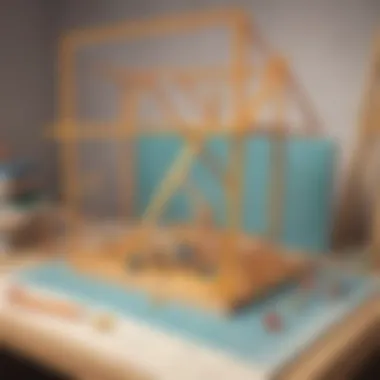
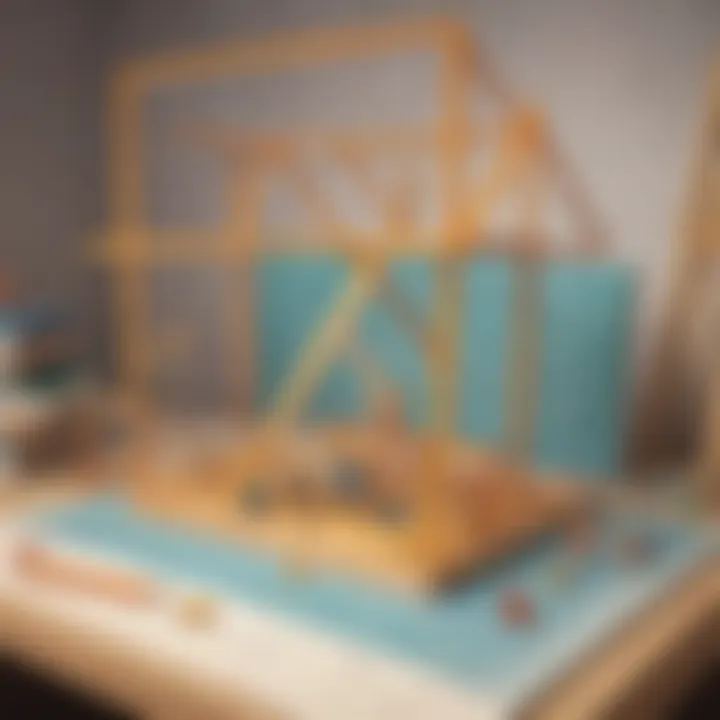
“Mistakes are proof that you are trying.” Understanding that making mistakes is a part of the learning process is fundamental for whoever works with kids.
Strategies for Overcoming Difficulties
To assist children in navigating geometry challenges effectively, restructuring approaches and providing support can propel comprehension. Here are some strategies:
- Utilize Visual Aids: Leverage graphing paper or digital drawing tools that allow children to draw shapes and see properties clearly. Visual learning can greatly enhance their spatial understanding.
- Practical Activities: Incorporate hands-on activities when exploring geometry concepts. Examples include using blocks to demonstrate volume or tracing objects to explore their shapes.
- Encourage Explanation: Students can benefit from explaining their thought process to another person. Peer-to-peer learning helps clarify their own understanding and reveal gaps in knowledge.
- Breaking Down Problems: Teach children to dissect problems into smaller, more manageable steps. By focusing on one element of a problem at a time, the overall concept becomes less intimidating.
These strategies are not only solid steps to assist young learners but can actively shape the way they interact with math for years to come.
Resources for Learning Geometry
Access to valid resources is crucial for young learners to develop a solid understanding of geometry. Thig is especially true for mathematics. Resources can supplement classroom learning. They provide additional context and practice opportunities, offering students a richer understanding of geometry concepts. By using the right material, students can reinforce what they learn and fill any gaps in their knowledge.
Benefits of Quality Resources:
- They can cater to different learning styles.
- Facilitate self-directed learning.
- Help students apply geometry to real-life situatons.
- Build confidence in problem-solving.
In this section, we will delve into several types of educational resources that students, parents and caregivers can use to strengthen understanding of geometry. We will look at books and textbooks, online tools and apps, as well as interactive activities and games. Each of these resources offers unique benefits and can play an essential role in the educational journey.
Books and Textbooks
Books and textbooks are often the primary resources used in classroom settings. They form a long-lasting foundation for learning geometry
When selecting a book, its clarity and depth should be top priorities. Good books explain concepts simply and provide plenty of examples for children. Books like "Geometry: A Comprehensive Course" by Michael L. Hares allow for thorough learning. Such resources typically include:
- Defined terms and concise explanations
- Sample problems for practice
- Solutions to encourage independent checking
Additionally, consider textbooks that explore applied geometry, bridging theory with practical examples.
Online Tools and Apps
In today's digital landscape, online tools and apps can be powerful allies in learning geometry. These resources often provide interactive learning experiences that ares enjoyable and engaging. Apps like Prodigy Math or GeoGebra make complex concepts more accessible through familiar formats and visual aids.
Some features often found in online tools include:
- Instant feedback: Which helps learners correct mistakes quickly.
- Gamified learning: Makes education fun and encourages consistent practice.
- Flexibility: Learners can study anytime, best suited to their own pace and schedule.
There are many resources available through well-established platforms. Check sites like Wikipedia for foundational concepts, or educational statements on Britannica support adult understanding too.
Interactive Activities and Games
The inclusion of interactive activities and games cannot be overstated in their importance for developing geometry skills. When students engage in learning actively, they retain information better.
Interactive activities may encompass:
- Hands-on projects, like creating geometric shapes using crafts materials.
- Web-based games that test knowledge in a fun way, encouraging completion by reward systems employeed within these games.
Parents and caregivers can search for online communities, like forums on Reddit, which share valuable game suggestions or how to craft learning material; targeted specifically at making geometry enjoyable.
Overall, being resourceful in selecting appropriate material enhances the child's learning experience.
"Using the right resources can transform learning into an enjoyable journey that prepares children for future challenges in numeracy skills."
Educators and parents alike can take an active interest in navigating these resources together with their children. It fosters better understanding and strengthens skill acquisition. Young learners benefit significantly from blending structured learning with playful exploration.
Closure
The Importance of Geometry Skills
Geometry skills are crucial for young learners. These abilities help students understand the world we live in. Geometry equips them with the tools to visualize and interpret shapes and spaces. Such understanding lays the groundwork for advanced math topics in future years. For example, grasping geometry translates to better performance in algebra and trigonometry. Moreover, geometry enhances logical reasoning and problem-solving capabilities. With an understanding of how to structure arguments and derive conclusions, students develop their analytical skills.
In a practical sense, geometry skills allow students to engage with various real-world situations. A child can visualize the layout of a room, calculate the area of a garden, or understand the angles in a piece of art they admire. The ability to reason spatially is valuable not only academically but also in everyday life.
Key Benefits:
- Builds a strong foundation for advanced mathematics.
- Enhances problem-solving capabilities.
- Improve analytical thinking.
- Supports better engagement in real-world scenarios.
Continuing Your Geometry Journey
Continuing the journey in geometry is about nurturing curiosity and a passion for learning. Once students have the basic concepts down, they can explore more complex ideas. This will keep their interest and motivation high. Resources such as math games and interactive learning platforms, like Khan Academy or IXL Math, provide means for continued practice. For the young learners who seek a challenge, finding new geometric problems can stimulate thought and engagement.
Parents and caregivers can facilitate this journey by encouraging open discussions about geometry in everyday circumstances. Enjoying activities such as building with blocks, or measuring items around the house, can reinforce learned skills. Asking questions like “What shape is this?” or “How can we calculate the area of the table?” prompts students to apply their understanding.
The goal is sustained growth and exploration. Geometry is present in many areas, from design to architecture and various science fields. Encouraging continued interest and applications will equip them better for future learning. Students shouldn't view geometry merely as a subject they learn in school but as a set of skills they can carry with them throughout life.







